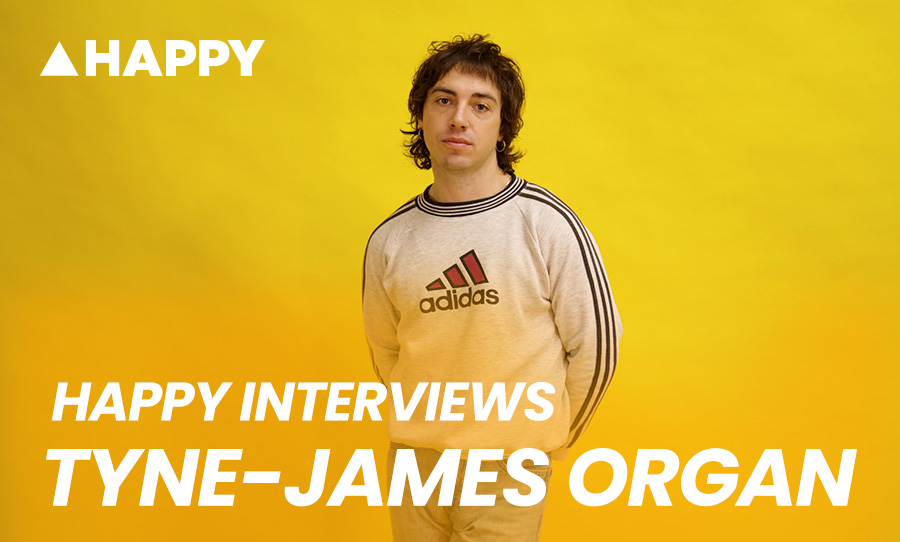Teenage Engineering created an icon in the worlds of music and design with a unique innovation, the OP-1 synth and sampler.
by Oliver Newland and Josh Clarke
The OP-1 has made quite a splash in the synth market since its debut in 2011. Its design, power and size enhanced its reputation as a one-stop music-making machine.
The team responsible for this cult classic is the Swedish electronics and design company Teenage Engineering, a group of innovative designers and engineers led by Jesper Kouthoofd, one of the brains behind the UI of the Elektron Machinedrum. Their products are renowned for their aesthetic value, functionality and modern design, and their very first product, the OP-1, set the standard extremely high.

The Birth of a Legend
Teenage Engineering has been a tight-knit team since its formation, opening the gate on a world of innovative instrument design with the Absolut Choir in 2007.
In collaboration with the Absolut vodka company, the team created an AI choir of wooden dolls that sang in harmony. By writing words into the dedicated software, you could inspire the choir to sing in different ways. The team would later go on to develop their first hardware product, the OP-1, which remains their flagship synth to this day.
The design of the OP-1 was influenced by the VL-Tone – a synthesiser and pocket calculator manufactured by Casio in 1979. Though it shares similarities in dimensions and a vague aesthetic connection, Teenage Engineering’s invention easily supersedes the Casio in sound generation and versatility.
The team has since grown to over 25 members, expanding their exploration into portable, affordable synthesis in the years since the OP-1’s debut. Teenage Engineering collaborated with the apparel company Cheap Monday in 2015 to create the PO-10 Pocket Operator range. The PO-10 range acted as a cheaper alternative to the OP-1 with many new models added since.
Other products include their extremely Swedish collaboration with furniture manufacturers IKEA in Frekvens as well as the most recent Playdate with Panic Inc. Perhaps the most crucial of all their recent products is their 2018 multimedia synthesizer and sequencer, the OP-Z. The OP-Z burst onto the scene as a powerful sequencer, video and photo tool and a more affordable, smaller alternative to the OP-1.

Under the Hood
The OP-1 is a monotimbral synth, with six voices of polyphony. Inside are 11 different synthesis engines including FM, Cluster, Digital, DNA, DSynth, Dr Wave, String, Phase, Pulse, Sampler, and Voltage. Each offers up a different flavour of synthesis and contains 1 DCO (digitally controlled oscillator) per voice – pulse, saw and square. Besides synthesis the OP-1 acts as a sampler with a built-in mic, FM radio, 4 track tape recorder/mixer, MIDI keyboard and sequencer.
All these functions are controlled using the 4 knobs, mixer/menu panel buttons and the on-screen neon cartoon modules. These modules cover everything from synthesis and mixing to effects and sequencing. They are responsible for giving the visual feedback needed from a synthesizer of this size. The Cow CWO frequency shifter and The Monkey drum machine are just a couple of the fan favourite modules. Each module offers precise visual feedback while contributing to the OP-1’s famous quirky charm.
The OP-1’s 4 track tape recorder is a feature that Teenage Engineering believes helps users to be more creatively engaged. Given the number of artists known to use it, namely Childish Gambino, Deadmau5 and Andrew Huang, it’s hard to disagree.
Having to scrub back through your recordings to slice up the right part is an experience unmatched by mouse and keyboard. It is this physicality that forces you to perfect your takes or make smarter compositional choices. Above all, it is our limitations that kick our musical creativity into overdrive and the OP-1 understands this exactly.
All In One
The OP-1 could do everything other 2011 synths could do in a unit a fraction of the size. A built-in sampler and microphone meant you could record external audio on the go to be tweaked and played later. At the time having a synth with so many features often meant buying multiple larger systems.
For what models like KORG’s 88-key Kronos workstation had in features, it lacked in portability and intuitive design. The point being, one of the chief virtues of the OP-1 is that it packs a massive amount of creative versatility and horsepower into a pocket-sized device. It’s like a Nintendo Switch, but for crafting beats.
To Infinity and Beyond
The future of the OP-1 came earlier than we could have imagined, in the form of the OP-Z. The OP-Z is a multimedia synthesizer and sequencer released in 2018 that offered musicians an even smaller alternative to the OP-1. Including DMX lighting and Unity 3D motion compatibility, the OP-Z is an effort to break out beyond music to create an all-encompassing audiovisual experience.
Using the OP-Z’s advanced sequencing capabilities, you’re able to program lights or motion graphics synced in real-time. If you wanted to perfectly sync your OP-Z beats to your friend’s latest videogame demo, it has you covered. In essence, the OP-Z is the perfect tool if you want to start pushing your creative limits and integrate visual design into your world of music. But while the OP-1 and OP-Z are often put on the same level, the truth is they are two very different machines.
Frequently Operated Questions
When a discussion about the OP-1 is brought up there always seem to be a few classic questions. People often ask if it is a good beginner’s synth. The answer to this is both yes and no. The OP-1’s intuitive design and compact size make it excellent for those looking to have fun learning the ins and outs of synthesis. In contrast, factors like its hefty price tag contradict this notion. This is especially the case considering other great beginner synth options, the KORG Volca series for example, that are available today.
Some consider the OP-1 to be powerful enough to act as a standalone studio solution. Its ability to sample, sequence and synthesize intuitively makes it a viable alternative to DAWs, especially if you’re keen on hardware rather than software.
Judging by their history until now, Teenage Engineering is a company that is unlikely to stop pushing the creative envelope. The company’s powerful yet quirky OP-1 – guided by limitations, yet immensely capable – is a striking debut and a diminutive classic.



